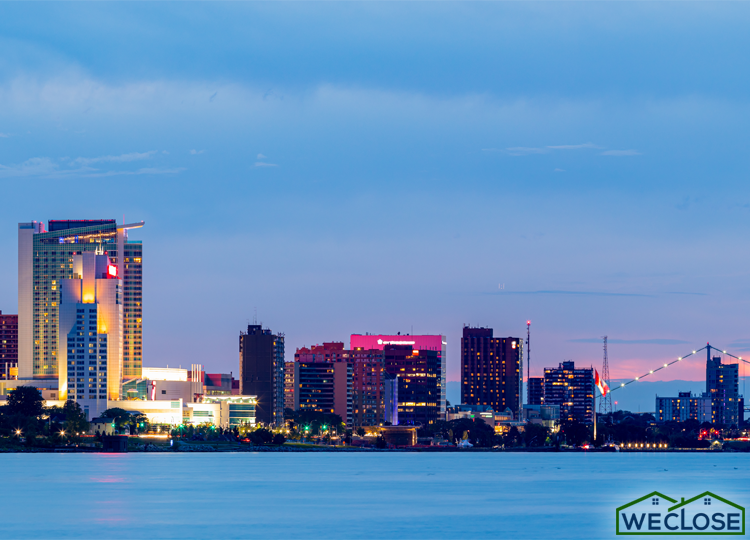Weclose Windsor Ontario
Are you buying, selling, or refinancing a residential property in Windsor, Ontario? Your Weclose real estate lawyer Windsor Ontario helps individuals, corporations, and financial institutions close residential real estate deals. Weclose is dedicated to making the complex task of legal closing simple and cost-effective.

Welcome to Windsor Ontario
Windsor, Ontario, often referred to as the “Automotive Capital of Canada,” is a dynamic city with a rich industrial heritage and a vibrant cultural scene. Situated along the picturesque Detroit River, directly across from Detroit, Michigan, Windsor boasts a unique blend of Canadian and American influences. The city’s waterfront is a focal point, offering stunning views and the Windsor Sculpture Park, an outdoor gallery featuring an impressive collection of contemporary sculptures. This scenic area is perfect for leisurely strolls and is a favorite spot for both locals and visitors. Windsor’s historic ties to the automotive industry are proudly displayed at the Canadian Transportation Museum & Heritage Village, where visitors can explore Canada’s transportation history and see vintage vehicles up close.
Windsor Real Estate Law
The Weclose legal team works with agents, lenders, and brokers in Windsor. Our real estate lawyer Windsor have closed deals across Ontario with a focus on customer service and satisfaction. All Weclose deals are closed using experienced lawyers licensed and insured to practice residential real estate law in Ontario.
Fixed-Cost Real Estate Lawyer
Weclose Windsor real estate lawyers strive to provide fair and predictable fixed-rate pricing for all residential real estate buy, sell, and refinance legal closing services. Enjoy the simplicity and savings of virtual meetings and electronic document signing from your home or office. Use our simple quote form to get a secure and guaranteed instant quote you can rely on emailed to you instantly.
More About Windsor Ontario
Windsor is home to a diverse culinary scene, reflecting its multicultural community, with everything from Italian trattorias to Middle Eastern eateries. The city’s connection to Detroit provides easy access to cross-border attractions, yet Windsor itself boasts unique sites like the historic Willistead Manor and the lively entertainment district along Ouellette Avenue. Whether you’re exploring the sprawling parks, enjoying a day at the beach in nearby Point Pelee, or taking a stroll through the charming neighborhoods, Windsor offers a welcoming atmosphere and a rich cultural experience that captures the essence of Ontario living.
A City of Culture, History, and Scenic Beauty
Beyond its cultural and culinary offerings, Windsor is a gateway to outdoor adventure and natural beauty. The city is just a short drive from Point Pelee National Park, one of Canada’s most ecologically diverse regions, known for its birdwatching, hiking trails, and sandy beaches. Windsor’s own parks, such as Jackson Park and Ojibway Park, provide ample green space within the city for residents and visitors to enjoy. Whether you’re exploring the vibrant city center, taking in the riverside views, or venturing into the surrounding natural landscapes, Windsor, Ontario, offers a unique blend of urban excitement and natural tranquility that makes it a standout destination in Southwestern Ontario.
More for Your Windsor Deal
- Need a real estate agent in Ontario. Check out the Top 5 Real Estate Agents in Windsor post for five great choices.
- Looking for an estimate of Land Transfer Taxes. Visit our Land Transfer Tax Calculator Windsor to run the numbers.
- Want to know your mortgage payment? Get an easy estimate on our Mortgage Calculator Windsor page today.

